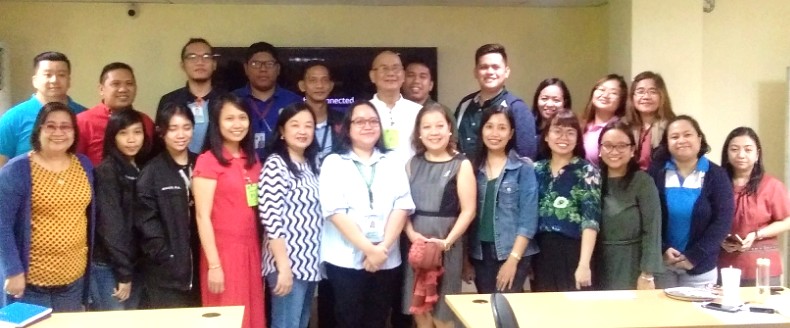When officials from the Ministry of the Environment in the Maldives sat down with experts from the Climate and Clean Air Coalition’s SNAP Initiative over the last few years, they discovered several things that helped them both craft policy and get the public behind its implementation.
One major finding was that the mitigation measures in their contribution to the Paris Agreement on climate change would not only reduce their greenhouse gas emissions by 24 per cent, but also cut direct fine particulate air pollution, or PM2.5, the most health-harmful of air pollutants– in other words, efforts to meet the Maldives’ international climate change commitments could provide substantial local benefits to Maldivians through improved air quality.
Now, the municipal governments of the Philippines’ biggest urban conurbation, Metro Manila, home to nearly 13 million people, are getting a sense of the advantages of aligning climate change and air pollution policies.
The Co-Benefits and Short-Lived Climate Pollutants Integration in Action Planning workshop, held late October in Quezon City, organized by Clean Air Asia, the Environmental Management Bureau of the National Capital Region and the national government’s Department of Environment and Natural Resources – Climate Change Division, kicked off a series of workshops on aspects of air pollution planning, communication and monitoring for municipal governments across the Philippines.
Officials from nine cities in Metro Manila attended the workshop, whose objectives were to:
- Understand the current situation in Metro Manila cities in terms of how they address air pollution and climate change;
- Introduce the co-benefits approach of action planning as a way of capturing impacts of policies and projects in a more holistic manner and synergizing resources;
- Identify opportunities for supporting cities in taking a co-benefits approach in policy development and implementation; and
- Encourage cities to commit to air quality and climate change work by joining the BreatheLife Network.
Clean Air Asia led participants in an exercise to get a fuller, more holistic picture of the co-benefits of policies and projects, challenging them to identify a sustainable transport solution and brainstorm on all the economic, social and environmental co-benefits resulting from that solution.
The Department of Environment and Natural Resources – Climate Change Division, itself leading national level work on the SNAP (Supporting National Action and Planning on Short-Lived Climate Pollutants) Initiative with the Climate and Clean Air Coalition, presented on national government policy and action on short-live climate pollutant (SLCP) reduction, and provided a national framework for local SLCP mitigation.
The workshop centred on focus group discussions in which participants were asked to assess their respective city’s: level of awareness of co-benefits and SLCPs, practices to integrate air pollution and climate change policies and plans, and capacity building needs in integrating air pollution control and climate change policies.

Participants learnt to capture multiple co-benefits of policies and projects. Photo by Clean Air Asia.
They revealed a promising picture, along with a clearer sense of what needed strengthening.
“We found that measures towards air pollution control and climate change mitigation exist within the cities in Metro Manila, and local agencies are mandated to carry these out,” said Clean Air Asia’s Senior Air Quality and Climate Change Program Coordinator, Ms. Dang Espita-Casanova, who facilitated the discussions.
“But, while most city representatives are generally aware of the concept of the co-benefits approach, it is not applied in identifying potential impacts during the planning stages and when performing monitoring and evaluation,” she said.
“At the moment, control measures are still usually planned and implemented from only one of the two perspectives, either to reduce air pollution or mitigate climate change, but not both— and, of course, there are also co-benefits that spill into yet other areas,” she continued.
“So, there are opportunities to promote better-integrated policies through the co-benefits approach, policies that could provide better returns in terms of health and liveability across a range of sectors and that have clear local impacts,” she added.
Opportunities identified that could result in significant improvements in promoting integration and co-benefits included:
- Institutional arrangements, including improving coordination, clarifying roles and pooling/optimizing resources (financial, human and technical) of local agencies which have relevant mandates on or have an impact on air pollution reduction and/or climate change mitigation (e.g., environment, transport, planning, disaster risk reduction and management);
- Helping cities set-up monitoring and evaluation systems for their policies and programs covering air pollution and climate change-related indicators;
- Building capacity in using models and tools to quantify co-benefits of local policies and programs.
The workshop was part of the needs assessment component of a project funded by the Climate Change and Clean Air Coalition (CCAC) and implemented by Clean Air Asia, the Institute for Global Environmental Strategies (IGES), and ICLEI-Local Governments for Sustainability-East Asia Secretariat (ICLEI-EAS).
Its results will help IGES, ICLEI and Clean Air Asia develop targeted training materials for Asian cities on integrating air pollution and climate policies and plans.
Metro Manila cities and the National Capital Region were invited to join the BreatheLife network to share air quality and climate commitments along with success stories to feed a virtuous cycle of action and solutions led by governments at all levels, from subnational to national.
Banner photo by David Stanley/CC BY 2.0